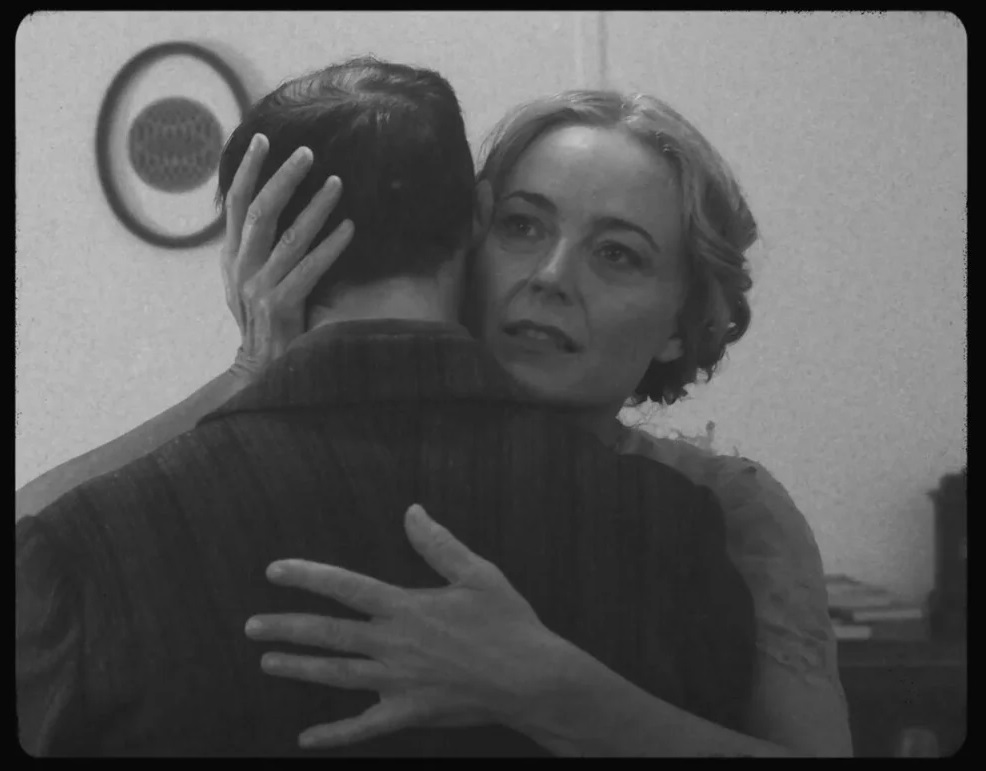
In our new exclusive interview, director Davide Chiazzese and writer/producer Raja Hanna open up about their bold fusion of classic surrealism and modern indie filmmaking in Love Intense. This visually arresting short film, which channels the spirit of Buñuel and Dali, immerses viewers in a dreamlike black-and-white world, exploring themes of love and obsession without a single word of dialogue. Chiazzese and Hanna provide fascinating insight into the artistic process and the unique approach that defines this distinctive cinematic project.
Questions to director Davide Chiazzese
Davide, the film centers around an intense love between two characters in a surreal world. Can you share what inspired you to tell this story? Was it yours or Raja’s idea to shoot this film as a nostalgic silent black and white picture in 1:1 ratio?
Davide: Raja approached 1PXL Studio, which I was a part of at the time, with the idea to recreate the eye cutting scene from Un Chien Andalou. As a budding director I wasn’t so interested in doing a frame by frame remake a la Gus Van Sant with Psycho. Admittedly, other than David Lynch, I didn’t know much about surrealism. So, upon further research I discovered that Bunuel and Dali agreed upon a process of writing down their dreams and selecting the most powerful images. I proposed that Raja and I do the same thing. For a week we emailed our dreams back and forth. I selected the ones that were most evocative, and Raja went away and wrote a script based on those images. In that way the film is very personal, it evolved from our subconscious minds and tells the story of whatever we were processing at the time. In discussing with Raja and the cinematographer we always intended for the film to be black and white with the 1:1 ratio but kept our options open. We did some tests before the shoot, and it became evident that this would be the aesthetic of the film.
How did your experience as an actor influence your approach to directing this film?
Davide: It was actually a big departure from my process as an actor. I studied Stanislavski’s method and always work really closely with my director to create my character. I didn’t do much talking with the actors. I was focused on the images we were creating: mood, tone, rather than backstory.
The connection between the characters is described as being controlled by “dreamlike forces of love.” How did you guide your actors to embody this abstract concept?
Davide: I chose two actors that I love and trust since this was my directorial debut. Anana Rydvald was my mime and storytelling teacher in theatre school and Mike Hughes was a clown for Cirque du Soleil for several years and we performed together in three plays. I trusted their instincts and gently directed them, but the focus was on physicality rather than the characters’ inner lives.
Given your extensive background in theater and your Sicilian cultural roots, how much of your personal experiences and heritage influenced the themes and execution of this film?
Davide: As much as we were trying to make a surrealist film, there is a linear realistic narrative to the story that I think means something different to all of us who collaborated. My work in theatre definitely helped me with the choreography of the film. Sicilians are passionate by nature and love intensely. I wonder if bits and pieces of my parents’ relationship found its way into the film.
You worked closely with producer and writer Raja Hanna on this project. How did your collaboration shape the direction and final outcome of the film?
Davide: As a first-time filmmaker I was blessed to have Raja trust my artistic process. His script was precise and evocative, and I was eager to bring it to life. By the time we got on set we were pretty aligned in terms of vision. We almost always had the same opinions in production and post-production.
What were some of the challenges you faced in transitioning from acting and theater to directing a film? How did you overcome them?
Davide: So much of theatre is about the text but there is room to communicate with an audience through the actors’ physical relationship in space and perhaps we can manipulate the audience to look where we want them to look through lighting. In film, you have more latitude to tell the story through image. My biggest challenge is developing that language.
What do you hope the audience takes away from the film?
Davide: I hope that the audience takes away that love is complicated and it’s not so black and white and that there is meaning in our dreams and that our subconscious mind is working out more than we think.
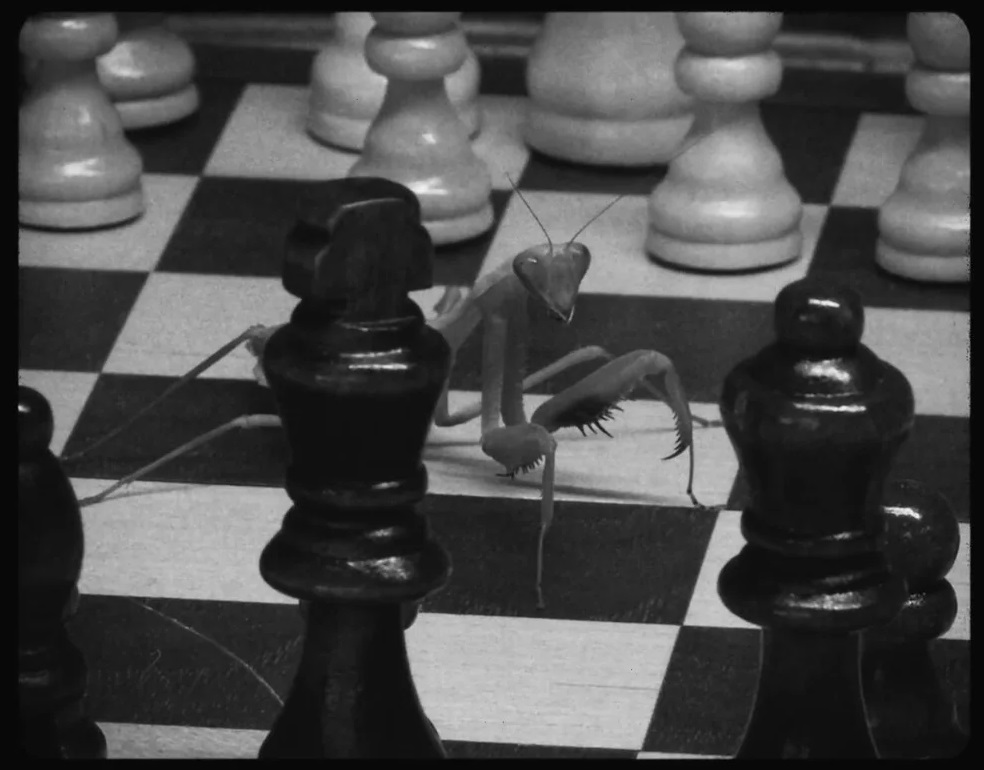
Questions to scriptwriter and producer Raja Hanna
Raja, what was the inspiration behind writing the story? Did you immediately know that this film must be without dialogue? Were there any particular works or experiences that influenced your writing?
Raja: The inspiration of that movie started when I studied art history at the University of Montreal. I loved the surrealism and the Dada movements. It felt so free to be able to tell stories without any limitations, by incorporating your subconscious and your dreams. I approached the team at 1PXL studio with my vision. The project was initially as an homage to the 1929 movie, Un Chien Andalou by Luis Buñuel and Salvador Dali. I wanted to recreate the eye cutting scene but by inversing the roles, having a woman controlling the man by removing his vision. She loves him so much that she removes his sight to keep him all to herself. Davide was on board with me to create an old-style movie, black and white without any dialogue. So, yes, from the beginning my intention was to tell a story with images and music only!
Writing for a silent film poses unique challenges, how did you adapt your writing style to convey emotion, tension, and surrealism without relying on spoken words?
Raja: Writing a silent movie was actually easier than I thought. The fact that it’s a surrealist movie made the writing freer but crazier! I can go as wild as I can and it’s all good!
To convey the emotions of the characters, you write the story as if you’re writing a novel, by going in details about the reactions and the movement of each character. So the actors knew while reading the script what message I wanted to portray in each scene.
The connection between the two main characters is described as being influenced by dreamlike forces. How did you conceptualize and write this unique dynamic between them?
Raja: The connection between the two main characters is love, they live together in a 1920’s appartement, surrounded by our own modern world. Their love is so strong that they cannot leave their surrealist world, they are living in a dream where everything is perfect as long as they stay in it.
How did your vision as a writer align with Davide’s directorial approach? Can you describe the creative process you shared in bringing this story to life?
Raja: It was very easy to work with Davide. He researched the surrealism movement extensively and he understood exactly what I wanted to create. As Davide said, he proposed to use the same process that Dali and Buñuel did while creating Un Chien Andalou, by combining their dreams and recreating them precisely in a movie. So, I took our dreams, mine and Davide’s, chose the best ones and wrote this sweet and powerful love story. I did change some of our dreams so we can adapt them to the screen and to respect our budget.
We debated whether to keep the movie in French or translate it to English. However, since I wrote the script in French, Davide and I decided to maintain the French writings in the film as a tribute to André Breton and the French surrealism movement.
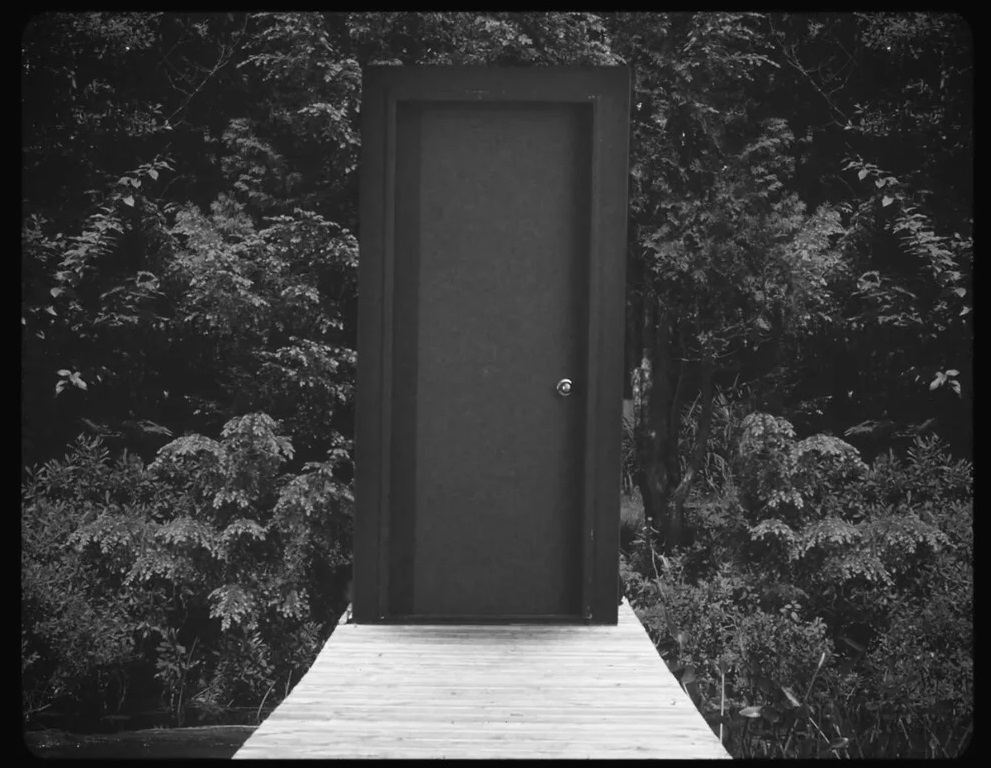
As a producer, how did you ensure that the surreal elements of the script were effectively translated on screen? What were the key challenges in this process?
Raja: Of course, the budget was the main factor. As the executive producer, I had to make sure that our ideas can be created without going over the limit. If you use special effects for everything, it can be easier but much costlier. But I thought about those scenes when I wrote the script, so we can respect the surrealism without going overboard.
So that made us much more creative, we went back to the way they did movies in the 1920’s. The eye, in the eye cutting scene, was a fisheye that we cut and filmed. We could have used special effects, but it was a much powerful scene to have it as close to the original movie. The insects were real live ones that we used in the bathtub scene. That scene was a real challenge, the actors had to act as if all was normal while having thousands of insects around them!
The film explores extreme passion and desire. What message or exploration of love were you aiming for with this story, especially within such an unconventional narrative structure?
Raja: I wanted the main story to be about unconditional and pure love, this couple where so much in love that they lived in their own world. The woman loved her husband so much that she wanted him all to herself. By removing his sight, she had him under her control, she can take care of him and love him.
Who do you see as the primary audience for this film, and what do you hope they experience or reflect upon after watching it?
Raja: This movie is for everybody. Each person will understand or analyze it according to their own experiences in life. The meaning of the movie will be different for everyone. Of course, movie buffs and art historian will understand the references to Dali, Buñuel and Man Ray. But I hope that the movie will push anyone who sees it to learn more about the surrealism movement.
What themes or ideas are you interested in exploring in your future work? Are you interested in continuing to make films in a retro style?
Raja: My next movie is completely different, it is called Night of Resolutions. We just filmed it and it’s in post-production. This time, the movie has dialogue, and the story is in the 1970’s. It’s still retro style but with a completely different look. And the story is about lost love, how divorce affects a family.
It should be released at the end of this year or beginning 2025. So, stay tuned!
Scriptwriter and Producer – Raja Hanna
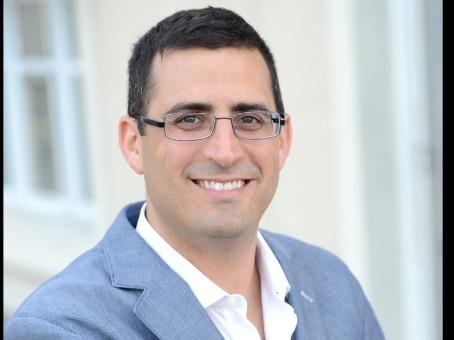
Raja Hanna is a scriptwriter, producer, and director who began his artistic practice in 2022 with his debut short film, Intensity (Intensité). He studied art history at Université du Québec à Montréal in 2018 and has since developed a multidisciplinary approach that includes literary, cinematic, and visual arts. In 2023, Hanna wrote and produced the surrealist short film Love Intense, which received several awards and honorable mentions at international festivals. His upcoming film, Night of Resolutions, is set for release in December 2024. Hanna’s work explores themes such as love, divorce, and desire, drawing inspiration from art history, cinema, and personal experiences.
https://www.instagram.com/rajahanna1
Director – Davide Chiazzese
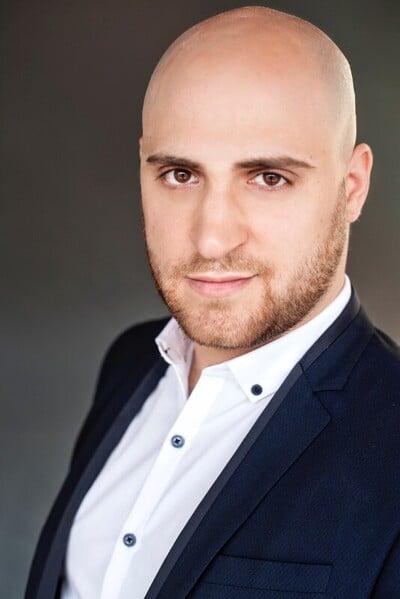
Davide Chiazzese is an actor, emerging director, and aspiring playwright active in Montreal’s theater scene. He gained recognition for his role in the English-language premiere of Michel Tremblay’s Hosanna, which won four Montreal English Theatre Awards (METAs), including Best Supporting Actor for Chiazzese. Introduced to the performing arts through his father’s involvement with l’Associazione Trinacria, Chiazzese studied at John Abbott College’s Professional Theatre Program. He became an Artistic Associate at Teesri Duniya Theatre and trained as a director through various mentorship programs. Chiazzese has also appeared in commercials, television series, and films such as The Lottery, Helix, Being Human, and X-Men: Apocalypse.
